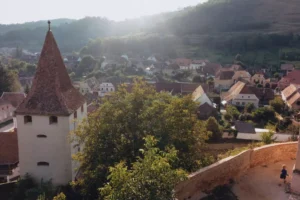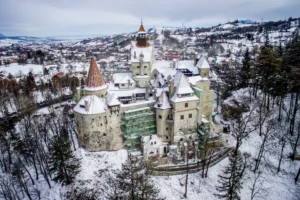This storied region in Romania is a land of vast wilderness, regal countesses, and plenty of folklore.
In the early afternoon, my family and I strode out of a beech forest and onto a sweep of high grassland, where an expanse of oak trees stood like solitary guards. A picnic was waiting for us, with goulash cooking over a fire and a table laid with a bright, cherry-colored cloth.
This was the Breite, one of Europe’s best-preserved wood pastures, a type of forest managed through grazing. It was here, deep in Transylvania, that the Saxons—Germanic people who arrived in Romania in the 12th century—used to come to fatten their pigs on the plentiful acorns. Some of the Breite’s oldest trees, with deep grooves in their bark, have towered since the Middle Ages. “These furrows are home to the great capricorn beetle,” Peter Suciu, our guide, told us. The insects are rare in other parts of Europe that have lost their old trees, the beetles’ preferred habitat.
Read More



